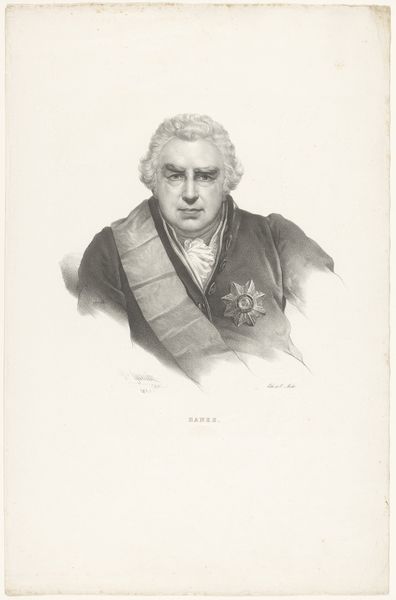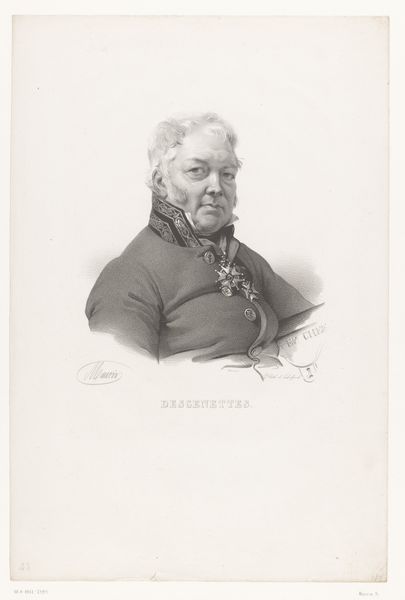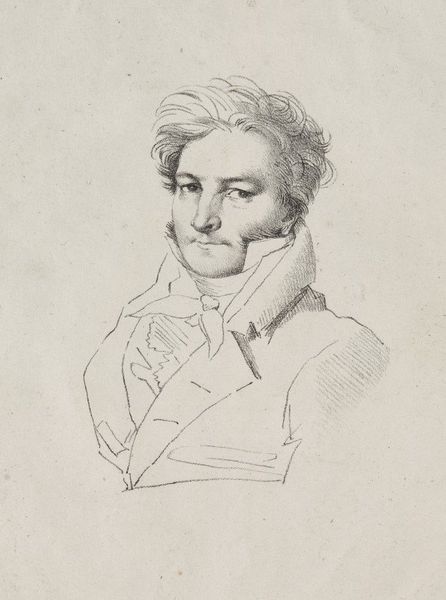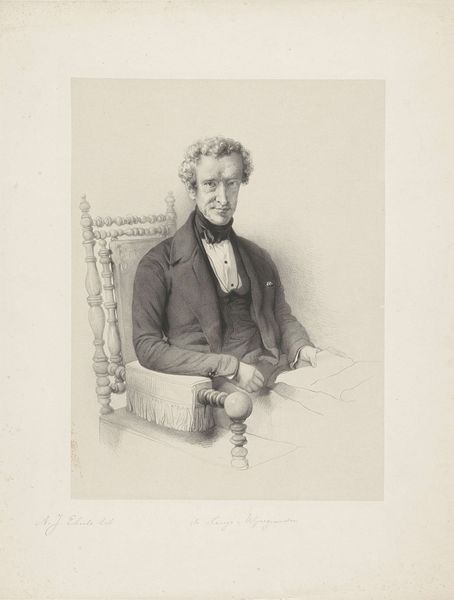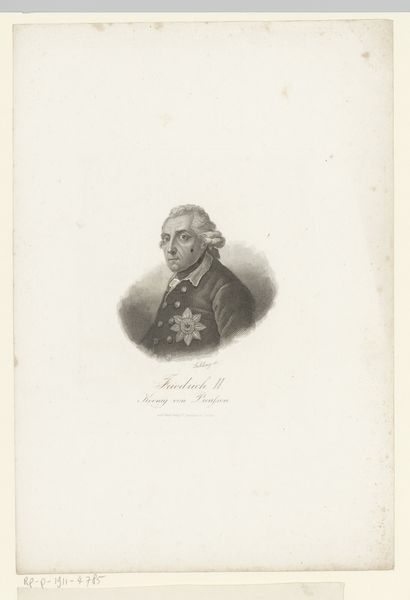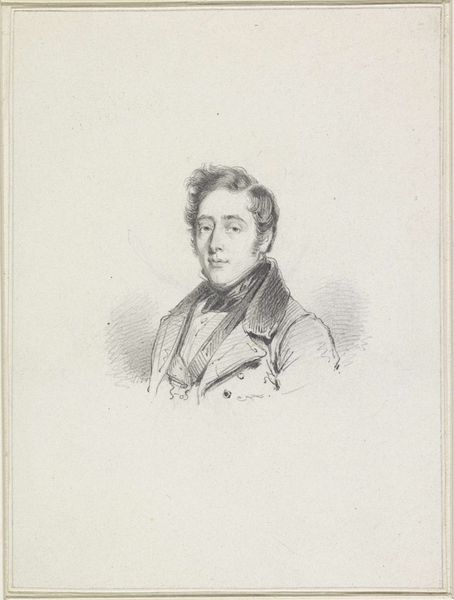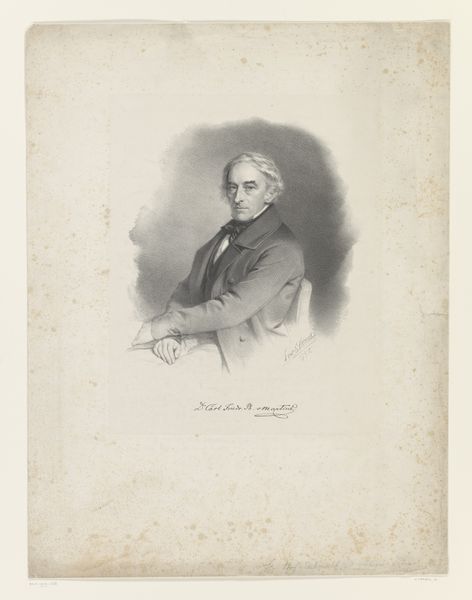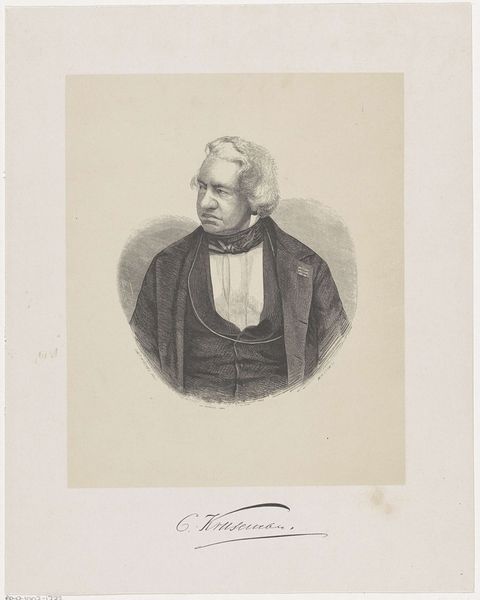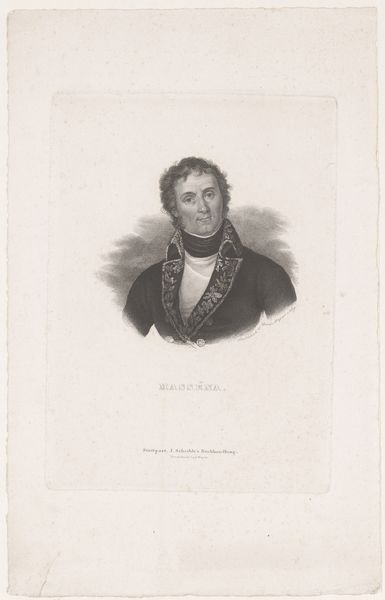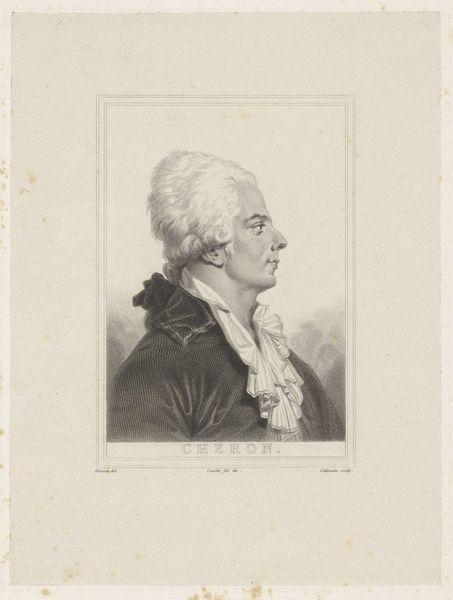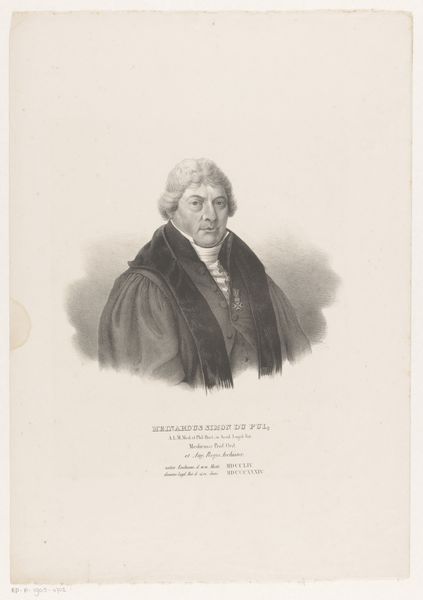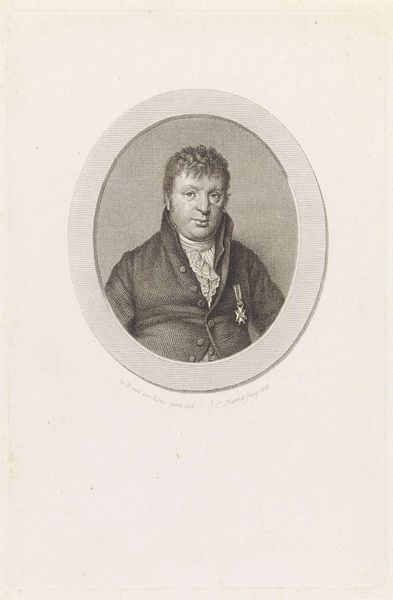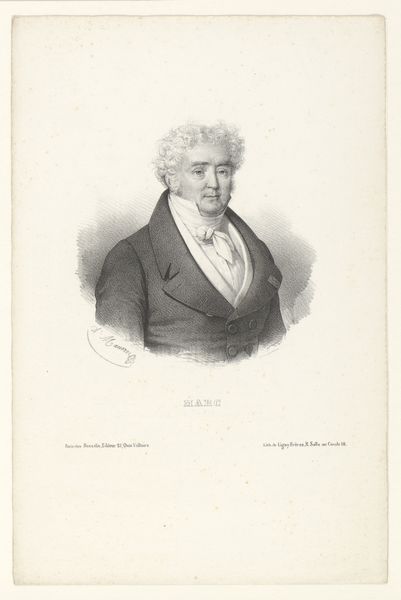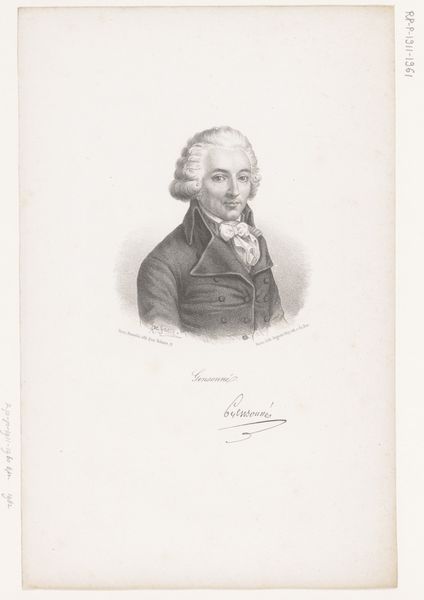
drawing, print, graphite, engraving
#
portrait
#
drawing
# print
#
pencil drawing
#
romanticism
#
graphite
#
graphite
#
engraving
Dimensions: height 264 mm, width 192 mm
Copyright: Rijks Museum: Open Domain
Curator: Standing before us is "Portret van de natuurkundige François Arago," a work made sometime between 1840 and 1853 by Arnz & Co. in pencil, graphite, and engraving. Editor: There’s a real sense of the serious academic here; it feels like a very formal and posed depiction. The stark contrast between the subject and the paper contributes to the intensity of the gaze, too. Curator: The socio-political implications of representing someone like Arago during that period are crucial to consider. Here we see him, a prominent scientist and politician, enshrined in this formal portrait style, reflective of the prevailing power structures in post-revolutionary France. Editor: Exactly. The visual language is deliberate; the precision of the graphite, the very act of capturing and distributing his image as a print, reinforced his position within a particular echelon of society. Who was meant to consume and reflect upon this image? Curator: One could consider the impact on emerging scientific circles. How did an engraving like this influence the perception and legacy of Arago? The act of reproducing his likeness meant making him a readily available figure in public consciousness. What conversations was this image meant to start? Editor: Beyond just distributing his image, this is really about defining it, cementing a particular interpretation of who Arago was. His intellectual achievements aside, the visual framing locks him into a narrative of respectability and authority, which has direct repercussions. Did he participate, or authorize these pieces himself? Curator: Indeed. Examining the broader context of portraiture within institutions like the Royal Academy at that time reveals how deeply intertwined art was with constructions of fame and authority. We can ask questions of its accessibility within emerging modern France as well. Editor: This reminds me that portraiture serves both memory and aspiration, that is for certain. This piece causes me to meditate on its cultural relevance beyond its subject, how deeply embedded the idea of portraits themselves have been within various stratifications of social and political structures, not just now, but even then. Curator: Yes, and it underlines the potency imagery possesses within any epoch, something truly undeniable in today’s society, and a reminder that even pieces such as this carry significance to those living in our own present.
Comments
No comments
Be the first to comment and join the conversation on the ultimate creative platform.
